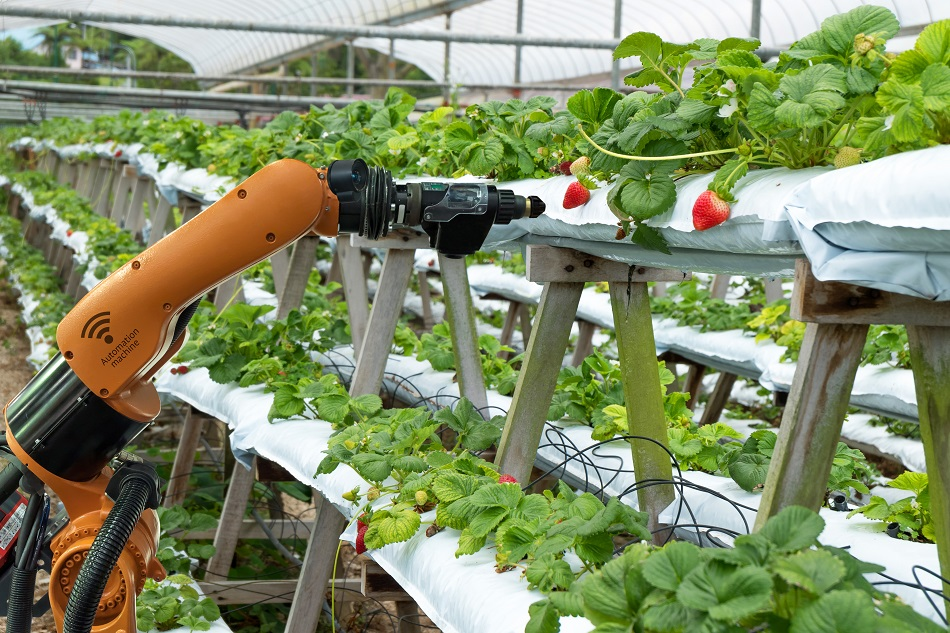Introduction
Agriculture has come a long way from its humble origins. Modern farming practices have evolved significantly, thanks to technological advancements that have revolutionized the industry. One such game-changing technology is robotics, which is playing a pivotal role in the realm of precision agriculture.
Precision agriculture, often referred to as precision farming or smart farming, involves using technology to optimize various aspects of farming, from planting and harvesting to irrigation and pest control. The aim is to enhance productivity while minimizing waste and environmental impact. In this blog post, we’ll explore how robotics is transforming precision agriculture and driving the industry towards a more sustainable and efficient future.
The Evolution of Precision Agriculture
Before delving into the role of robotics, let’s take a brief look at the evolution of precision agriculture. Traditionally, farming practices relied heavily on manual labor and guesswork. Farmers had limited access to data and struggled to optimize their operations effectively.
The advent of computers and the global positioning system (GPS) changed the game. Farmers started using GPS technology to precisely map their fields, allowing for more accurate planting, fertilization, and irrigation. This marked the beginning of precision agriculture.
As technology continued to advance, so did precision agriculture. Data-driven decision-making became more accessible, leading to improvements in crop yields and resource management. However, the real transformation occurred with the integration of robotics into farming practices.
The Role of Robotics in Precision Agriculture
Autonomous Tractors
One of the most significant advancements in precision agriculture is the development of autonomous tractors. These self-driving machines are equipped with advanced sensors and GPS technology, allowing them to navigate fields with precision. Autonomous tractors can perform tasks such as plowing, seeding, and harvesting more efficiently than their human-operated counterparts. They follow predefined routes, ensuring that crops are planted or harvested with pinpoint accuracy.
Crop Monitoring Drones
Drones equipped with high-resolution cameras and multispectral sensors have become indispensable tools for farmers. These aerial robots can capture detailed images of crops from above, providing valuable insights into crop health. Farmers can identify areas of stress, disease, or nutrient deficiency early on and take corrective measures, thus preventing crop losses and reducing the need for excessive pesticide or fertilizer use.
Weeding Robots
Weeds compete with crops for nutrients, water, and sunlight, posing a significant threat to yields. Traditional weed control methods involve manual labor or the application of herbicides, both of which have their drawbacks. Enter weeding robots, which use artificial intelligence and computer vision to identify and remove weeds with precision. These robots are not only more efficient but also reduce the environmental impact of farming.
Harvesting Robots
Harvesting is a labor-intensive and time-sensitive task in agriculture. Harvesting robots, equipped with specialized arms and sensors, can pick fruits and vegetables with incredible speed and precision. They can work tirelessly without the need for breaks, significantly reducing labor costs and ensuring that crops are harvested at their peak ripeness.
Benefits of Robotics in Precision Agriculture
The integration of robotics into precision agriculture offers numerous benefits:
Increased Efficiency: Robots can work around the clock without fatigue, leading to faster and more efficient farming operations.
Improved Accuracy: Robots can perform tasks with a level of precision that is difficult to achieve manually, resulting in higher crop yields and resource savings.
Reduced Environmental Impact: By using robotics to target specific areas of concern, farmers can minimize the use of pesticides, herbicides, and fertilizers, leading to more sustainable farming practices.
Labor Savings: The automation of repetitive and physically demanding tasks reduces the reliance on human labor, making farming more accessible and cost-effective.
Data-driven Decision Making: Robotics generates a wealth of data that can be analyzed to make informed decisions about crop management and resource allocation.
Challenges and Considerations
While the benefits of robotics in precision agriculture are substantial, there are also challenges and considerations to keep in mind:
High Initial Costs: The upfront investment in robotics technology can be significant, making it less accessible to small-scale farmers.
Technical Expertise: Farmers need to acquire the necessary skills and knowledge to operate and maintain robotic equipment effectively.
Data Privacy and Security: Collecting and storing vast amounts of data from robotic systems raises concerns about data privacy and cybersecurity.
Regulatory Hurdles: The use of autonomous machines in agriculture may be subject to regulatory and safety requirements that vary by region.
The Future of Farming
The future of farming undoubtedly involves a closer partnership between humans and machines. Robotics in precision agriculture is here to stay, and as technology continues to advance, we can expect even more sophisticated and capable robots to join the farming workforce.
Imagine a farm where drones monitor crop health, weeding robots keep fields free from invasive plants, and autonomous tractors handle planting and harvesting. This vision of the future is not far-fetched but rather a glimpse of what is already happening in agriculture today.
As the world faces growing challenges related to food security and sustainability, the role of robotics in precision agriculture becomes increasingly vital. By harnessing the power of automation and data-driven decision-making, we can work towards a future where agriculture is not only more productive but also more environmentally friendly and sustainable.
Conclusion
The integration of robotics into precision agriculture represents a significant step forward in the quest for more efficient, sustainable, and productive farming practices. While there are challenges to overcome, the benefits of using robots in agriculture are undeniable.
From autonomous tractors and crop monitoring drones to weeding robots and harvesting machines, robotics is reshaping the landscape of agriculture. As technology continues to advance, we can expect even greater innovations that will further enhance the role of robotics in precision agriculture.
In the end, it’s not just about the adoption of cutting-edge technology; it’s about embracing a new era of farming that is smarter, more efficient, and more attuned to the needs of our planet and its growing population. The future of agriculture is robotic, and it holds the promise of a brighter, more sustainable future for us all.





